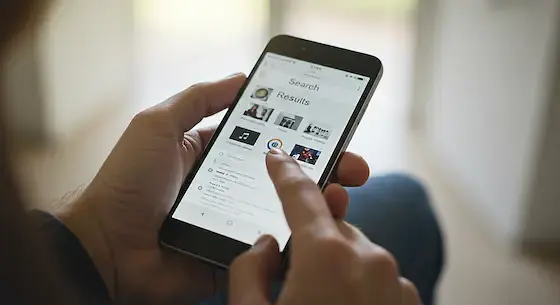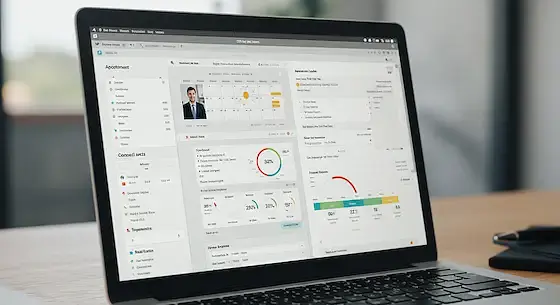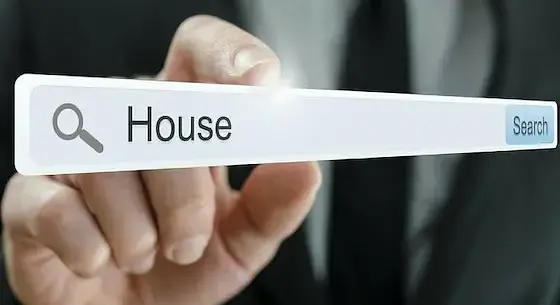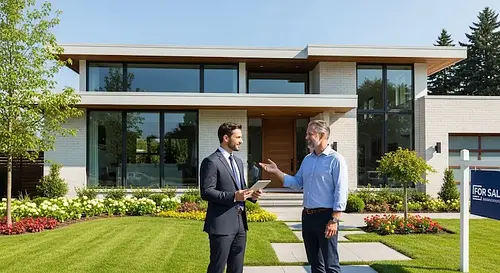Real Estate Online Lead Generation: Proven Strategies To Get More Buyer And Seller Leads In 2025
Want more real estate leads without cold calling or door knocking? This guide breaks down the most effective strategies for real estate online lead generation in 2025. Discover how to attract buyers and sellers through your website, social media, SEO, and lead capture tools—so your pipeline stays full and your business keeps growing.

Written by Seth Cox
Jun 04, 2025 / Real estate lead generation
The days of relying solely on referrals, cold calls, or door knocking are over. Today’s top agents use digital strategies to attract buyer and seller leads, convert website visitors into clients, and automate follow-up so no opportunity slips through the cracks.
In this guide, we’ll show you how to get real estate leads online using proven strategies—ranging from SEO and social ads to high-converting landing pages and email automation. You’ll also discover tools, tips, and platforms that make lead generation easier and more effective, even if you’re short on time or tech skills.
Let’s dive into the best ways to generate real estate leads online—so you can build a lead machine that works 24/7.
Why Online Lead Generation Is Essential for Real Estate Agents Today
According to the National Association of Realtors, 97% of homebuyers use the internet in their home search. That means if you're not showing up where they’re searching—Google, Facebook, Instagram, and local listing sites—you’re invisible.
Relying only on referrals or open houses limits your growth. Online leads offer scale, consistency, and reach. They work while you sleep, attracting prospects from your website, social media, and paid ads around the clock.
The good news? With the right strategies, you don’t need a big budget or tech team to generate high-quality leads online. You just need the right playbook—which we’re about to cover.

Build a High-Converting Real Estate Website
Home Valuation Landing Page
- Feature a strong CTA like: “Get your home’s value in 30 seconds—free.”
- Embed an AVM or offer manual CMA delivery for better accuracy.
- Keep the form simple—name, address, and email only.
- Follow up with a thank-you email and next steps for a consultation.
- Use retargeting ads for visitors who don’t complete the form.
Coming Soon and Offline Listings Page
- Gate access behind a simple sign-up form.
- Include teaser property details and blur key features until unlocked.
- Use Showable to attach private listing files after in-person events.
- Promote these pages in social ads with messaging like “Not on Zillow.”
- Create scarcity by noting “limited access” or “agent-only preview.”
Relocation Guide Page
- Offer a PDF download in exchange for name and email.
- Include school info, commute times, and lifestyle comparisons.
- Target feeder markets with Facebook ads linked to the guide.
- Use this page in email follow-up for leads who inquire about moving.
- Link to neighborhood spotlights or blog content from the guide.
Open House Schedule Page
- List all upcoming open houses with time, address, and property links.
- Embed Showable sign-in links for seamless follow-up.
- Add “RSVP now” CTAs to drive engagement before the event.
- Include a map or filter by neighborhood for better UX.
- Promote the link in your social posts, email blasts, and listing pages.
Testimonial and Case Study Pages
- Highlight before-and-after results with timelines and sold prices.
- Include headshots, names, or at least initials and neighborhoods.
- Add client quotes and short video testimonials where possible.
- Structure your case studies as “problem → solution → result.”
- Interlink with related blog content or relevant landing pages.
Lead Magnet Popups and Exit-Intent Offers
- Offer resources like “Home Seller Checklist” or “Buyer Mistakes to Avoid.”
- Trigger popups based on time on page or exit intent.
- Keep copy short and benefit-driven (“Download instantly—no spam”).
- Use Brevo or Follow Up Boss to send an immediate delivery email.
- A/B test different headlines, formats, and timing for best results.

Leverage Facebook and Instagram Ads to Generate Real Estate Leads Online
Home Valuation Ads
- Headline example: “What’s Your Home Worth in 2025?”
- Offer a free home value report in exchange for an email address.
- Target homeowners within a specific zip code or neighborhood.
- Deliver a CMA or AVM instantly, followed by automated follow-up.
- Ideal for retargeting past website visitors or landing page traffic.
Off-Market and Coming Soon Listings
- Headline example: “See Homes Before They Hit the Market”
- Offer a private list of off-market or coming-soon properties.
- Use a gated landing page to collect buyer preferences.
- Segment leads by budget or neighborhood for targeted follow-up.
- Create urgency by highlighting limited access or insider status.
Home Relocation Guide Ads
- Headline example: “Moving to [City]? Start Here.”
- Offer a downloadable relocation guide in exchange for contact info.
- Include neighborhood maps, school rankings, and commute tips.
- Target users in feeder markets or with relocation-related behaviors.
- Set up a nurture campaign that builds trust over time.
Price Drop Alerts
- Headline example: “Be the First to Know When Prices Drop”
- Create a simple opt-in form for local price reduction alerts.
- Deliver automated listing updates via email or text.
- Filter leads by price range or desired area for relevance.
- Build trust by consistently delivering useful market insights.
Open House Lead Capture Ads
- Headline example: “Missed the Open House? We’ve Got You Covered.”
- Offer a video tour or download link for disclosures and floor plans.
- Run RSVP ads for live open house events with calendar invites.
- Use follow-up emails to share similar listings or private showing options.
- Capture every in-person visitor with Showable and automate your next steps.

Use Google Local Service Ads to Attract High-Intent Real Estate Leads
What Are Google Local Service Ads?
- Appear above standard Google Ads and organic results.
- Only pay for valid leads—calls or messages from real prospects.
- Use your business license and background check to get verified.
- Display your rating, hours, and contact info in a clean card format.
- Ideal for agents who want immediate exposure and measurable ROI.
Why They Work for Real Estate Lead Generation
- Targets searchers in the action phase, not just research.
- Great for capturing both buyer and seller leads.
- Filters out low-quality traffic with built-in screening.
- Boosts trust by displaying verified status and Google reviews.
- Supports mobile-first behavior with click-to-call functionality.
How to Set Up and Optimize Your LSA Campaign
- Visit ads.google.com/local-services-ads to start the signup process.
- Submit required documentation, including license and insurance.
- Choose "Real Estate Agent" as your service category.
- Add real photos, recent reviews, and clear service areas.
- Track and dispute unqualified leads directly in your dashboard.
Pro Tips to Maximize Lead Quality
- Respond to new leads within minutes to boost ranking.
- Ask satisfied clients to leave reviews on your LSA profile.
- Dispute spam or irrelevant calls to avoid wasting budget.
- Use a dedicated phone number to track conversions.
- Pair with CRM tools to automate post-lead follow-up.

Create Local SEO-Optimized Content That Ranks and Converts
Why Local SEO Matters for Real Estate Agents
- Captures high-intent organic traffic without ad spend.
- Builds long-term brand authority in your local market.
- Converts casual readers into email subscribers or inquiry leads.
- Targets both buyer and seller keywords with informational content.
- Works well when paired with lead magnets and forms.
Blog Topics That Attract Real Estate Leads
- “Is Now a Good Time to Sell in [City]?”
- “Best Neighborhoods in [City] for First-Time Buyers”
- “How to Buy a Home in [City] Without Overpaying”
- “Moving to [City]? Here’s What You Need to Know”
- “How Much Is My Home Worth in [Neighborhood]?”
On-Page SEO Best Practices
- Use one H1 (the title) and relevant H2/H3 subheadings throughout.
- Include keywords in the title, first 100 words, and meta description.
- Add internal links to other blog posts or your service pages.
- Include outbound links to reputable sources and local data.
- Optimize images with alt text and compress for fast loading.
How to Turn Readers Into Real Leads
- Offer a free “2025 Home Buyer Checklist” in exchange for email.
- Embed home valuation widgets inside seller-focused content.
- Include “Schedule a Call” or “See Off-Market Listings” buttons.
- Use exit-intent popups to recover abandoning visitors.
- Segment new leads into your CRM for drip campaigns.

Automate Lead Nurturing with Email Marketing and CRM Tools
Why Automation Is Critical for Lead Conversion
- Nurtures cold leads until they’re ready to convert.
- Sends educational content, market updates, and reminders on autopilot.
- Tracks open rates, clicks, and behavior for smarter follow-up.
- Helps segment leads by source, intent, or timeline.
- Prevents leads from slipping through the cracks.
Email Marketing Campaigns That Drive Results
- 5-email sequence for new buyer leads: financing tips, local lenders, timing advice.
- 3-email seller series: pricing strategy, staging tips, local market data.
- Monthly newsletter with new listings, blog posts, and market snapshots.
- Open house follow-up: video tour, seller disclosures, “schedule a private showing.”
- Anniversary or check-in emails to reactivate past leads.
Best Tools for Real Estate Lead Automation
- Brevo (formerly Sendinblue) – great for newsletters and workflows.
- Follow Up Boss – built for real estate teams and CRM sync.
- Mailchimp – user-friendly and ideal for smaller lists.
- Zapier – connects tools like Showable, Google Sheets, and CRMs.
- Showable – capture leads at open houses and trigger email sequences.
Pro Tips to Maximize Your Automation ROI
- Use first-name personalization in subject lines and intros.
- Set different workflows for buyers vs. sellers.
- Add urgency: “Inventory is dropping fast in [Neighborhood].”
- Re-engage cold leads with one-time campaigns or limited-time offers.
- Keep your list clean by removing inactive contacts every quarter.

Partner with Real Estate Lead Generation Websites (and Why to Be Cautious)
How Lead Gen Websites Work
- Zillow Premier Agent sells leads by ZIP code, often shared with multiple agents.
- Realtor.com offers “Connections Plus,” with phone-verified lead options.
- Homes.com and Opcity use performance-based referral fees at closing.
- Most sites collect leads using generic search forms or home valuation tools.
- Follow-up speed is critical—leads are often sold to multiple agents.
Pros of Using Third-Party Lead Services
- Fast access to ready-to-transact buyer and seller leads.
- No need to create your own landing pages or funnels.
- Can provide coverage in areas where your website doesn’t rank yet.
- Good for agents building brand presence in a new ZIP code.
- Easy to scale up or down depending on budget.
Cons and Risks of Third-Party Leads
- Leads are often unqualified or already working with another agent.
- Response time must be near-instant to compete effectively.
- You’re building their brand—not yours—with every interaction.
- High cost per lead with limited conversion guarantees.
- No long-term value unless you close and retain the client.
How to Use Them Strategically
- Use a custom intake form to pre-qualify leads once they contact you.
- Send an immediate follow-up with your brand’s unique value proposition.
- Move leads into your own email system for long-term nurture.
- Track ROI aggressively—cancel if lead cost exceeds target acquisition rate.
- Don’t rely on a single platform; diversify your lead sources.

Capture and Convert Leads with Open House Marketing
Why Open Houses Still Work for Lead Generation
- Helps meet motivated buyers actively touring properties.
- Captures seller leads from local homeowners “just browsing.”
- Builds your email list for ongoing campaigns and market updates.
- Creates content for social media, blog posts, and video walkthroughs.
- Lets you showcase professionalism and neighborhood knowledge in person.
Tools and Strategies to Maximize Open House Leads
- Use a digital sign-in app like Showable to capture names and emails.
- Send automated thank-you emails with links to listing details or next steps.
- Offer a giveaway (e.g., gift card raffle) in exchange for a completed sign-in.
- Display QR codes that link to your home valuation page or buyer checklist.
- Track guest feedback to prioritize serious leads for follow-up.
How to Promote Your Open House Online
- Post your open house schedule on a dedicated page of your website.
- Promote it in local Facebook Groups and on Marketplace.
- Create Instagram Stories with property walk-throughs and countdowns.
- Run a short Facebook or Instagram ad targeting local buyers.
- Email your list with a link to RSVP or preview the home.
Follow-Up Techniques That Convert Attendees
- Email attendees within 24 hours with property info and next steps.
- Share a video tour or document packet via Showable to stay top of mind.
- Ask buyers if they’d like help finding similar homes.
- Reach out to neighbors with a “Just Listed / Just Sold” follow-up strategy.
- Add new contacts to your CRM for drip campaigns based on intent.

Retarget Website Visitors to Reclaim Lost Leads
Why Retargeting Is Essential for Online Lead Generation
- Reaches people who visited your site but didn’t convert.
- Keeps your brand visible during their decision-making process.
- Improves ROI by reusing existing traffic rather than buying new clicks.
- Works across devices and platforms: desktop, mobile, social media.
- Can reduce cost per lead when paired with high-intent landing pages.
Best Retargeting Audiences for Real Estate Agents
- Visitors who viewed home listings but didn’t inquire.
- Traffic to your home valuation or seller guide page.
- Past open house attendees (if tracked via Showable or a form).
- Email subscribers who haven’t clicked in recent campaigns.
- Leads who downloaded a resource but didn’t book a call.
Ad Ideas That Bring Visitors Back
- “Still house hunting? See what’s new in [Neighborhood].”
- “Don’t list your home until you read this free pricing guide.”
- “Take the next step—schedule a private showing today.”
- “Get notified when prices drop in your favorite zip code.”
- “We saved your search. Ready to see what’s new?”
How to Set Up Retargeting Ads
- Install Facebook Pixel and Google Tag Manager on your website.
- Build custom audiences based on page views or events.
- Set frequency caps to avoid overwhelming your audience.
- Use A/B testing to refine ad copy and image performance.
- Link to dedicated landing pages for better conversion rates.

Track, Analyze, and Improve Your Lead Generation
Why Tracking Your Lead Sources Matters
- Understand which strategies generate the highest-quality leads.
- Identify which campaigns convert at the best cost-per-lead (CPL).
- Spot drop-off points in your funnel to fix leaks.
- Avoid overspending on underperforming platforms.
- Build a repeatable process for sustainable growth.
Key Metrics Every Agent Should Monitor
- Website conversion rate (visits to form fills or sign-ins).
- Cost per lead (CPL) from Facebook, Google, or Zillow.
- Lead-to-appointment rate and lead-to-close ratio.
- Email open and click-through rates on nurture campaigns.
- Landing page performance: time on page, scroll depth, exit rate.
Tools to Track and Measure Results
- Google Analytics 4 – for traffic sources, page behavior, and conversions.
- Meta Ads Manager – for tracking ad-level engagement and CPL.
- Google Tag Manager – for firing events and pixel tracking.
- Showable – to capture and track open house visitors and follow-ups.
- Follow Up Boss or Brevo – to monitor engagement across email and CRM touchpoints.
How to Continuously Optimize Your Funnel
- Test different CTAs on landing pages to improve conversion.
- Refresh ad creative every 2–4 weeks to prevent fatigue.
- Use email split tests to optimize subject lines and sending times.
- Drop underperforming traffic sources and double down on winners.
- Compare lead quality across platforms—not just quantity.

Conclusion: Build a Lead Machine That Grows With You
What You Should Focus on Next
- Choose 2–3 high-impact lead sources to focus on first (e.g., Facebook ads + SEO).
- Build out one lead magnet and nurture funnel for each major audience type.
- Use a CRM to track performance and automate follow-up.
- Commit to creating content weekly or biweekly to fuel long-term SEO.
- Audit your funnel every quarter and cut what’s not working.
The Real Estate Lead Gen Tech Stack That Works
- Showable – capture leads at open houses and deliver automated follow-up.
- Follow Up Boss – powerful CRM built for real estate agents.
- Google Analytics + Tag Manager – track user behavior and conversions.






